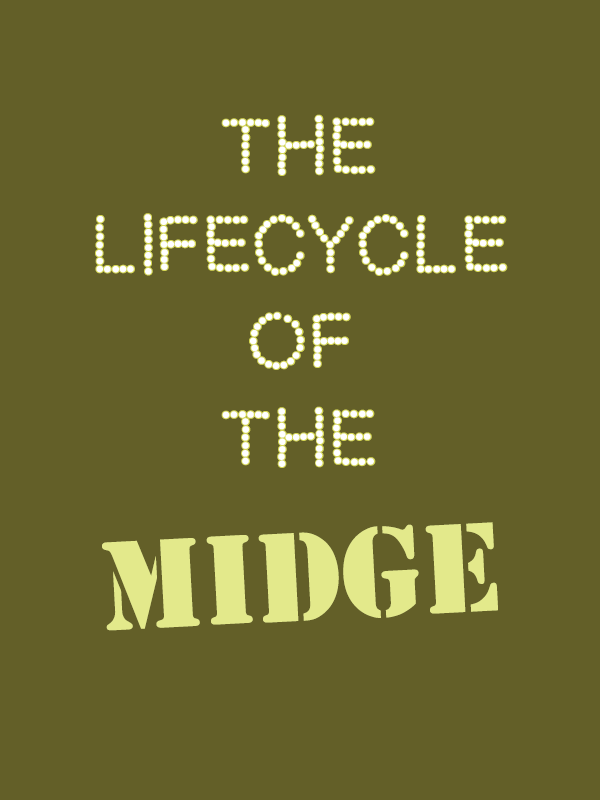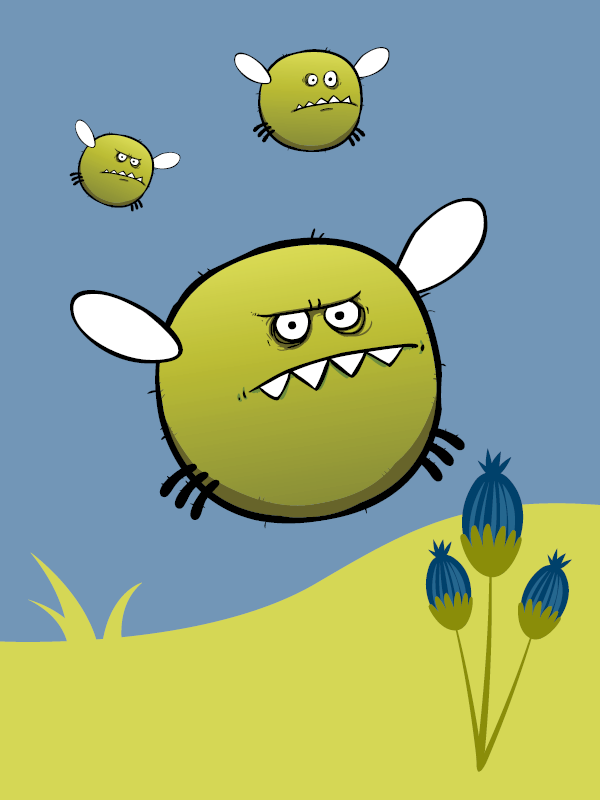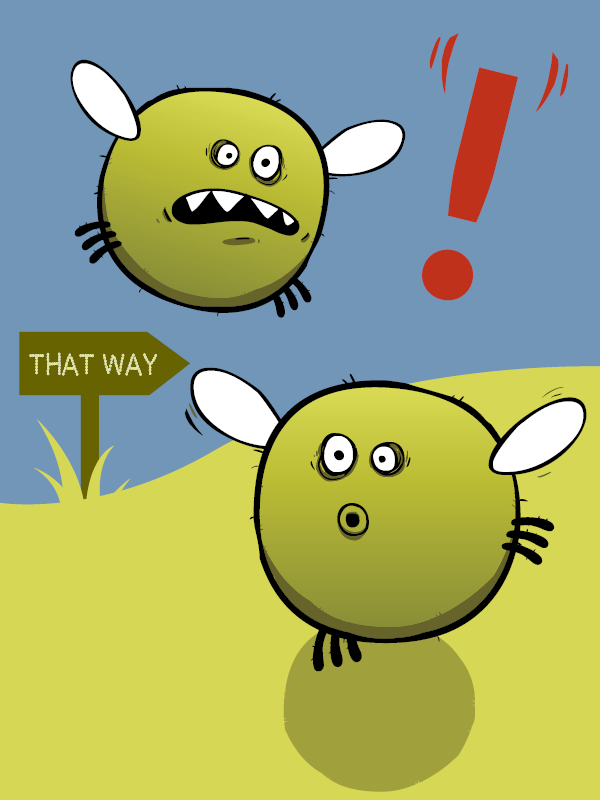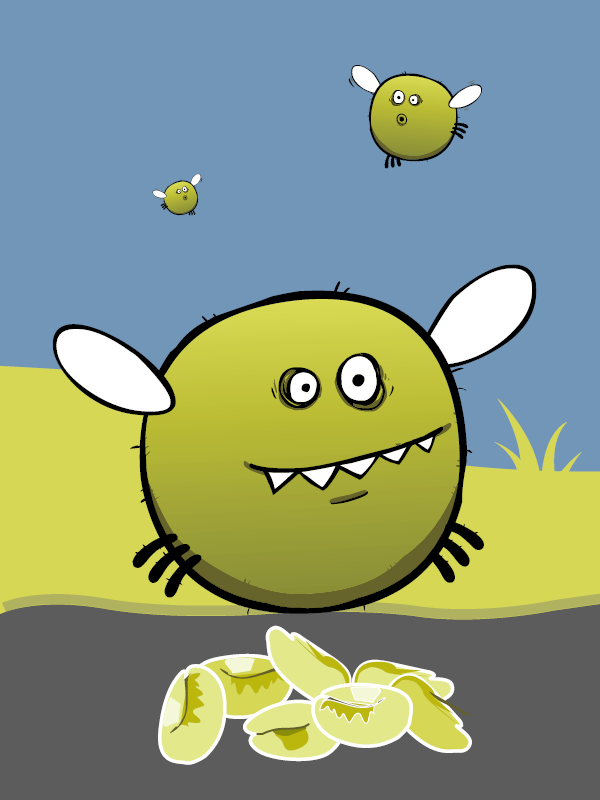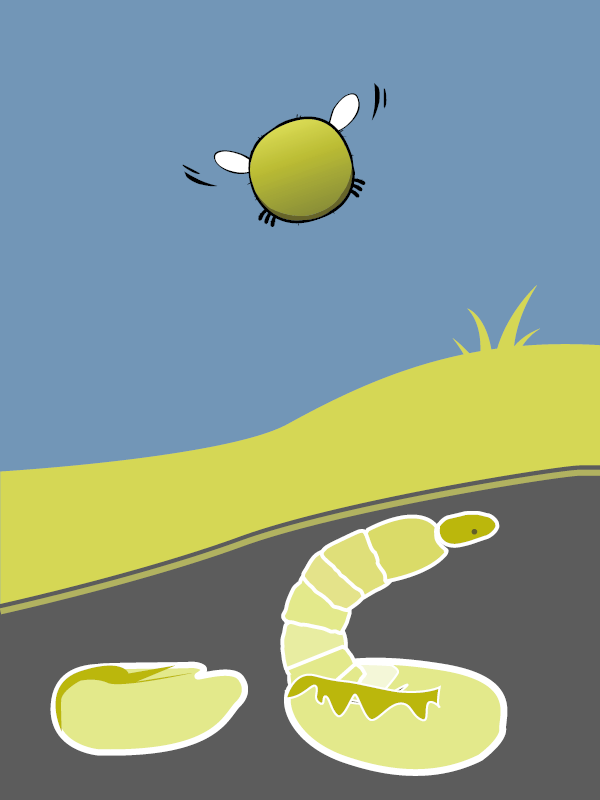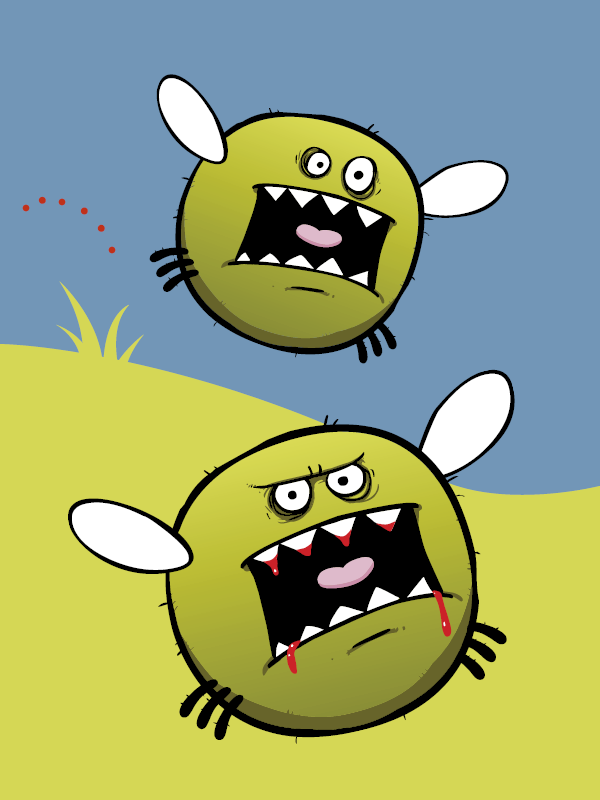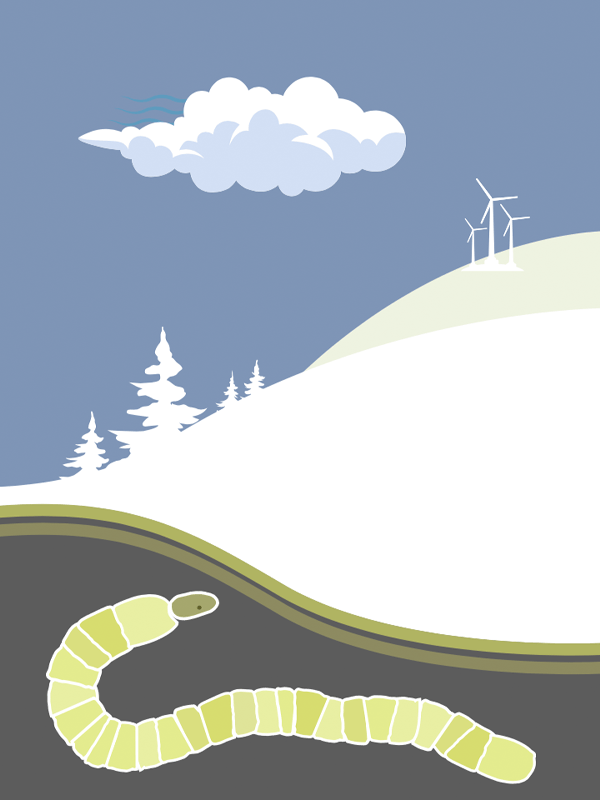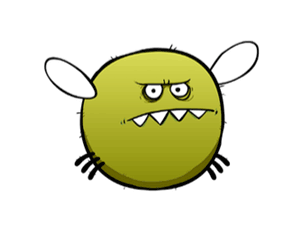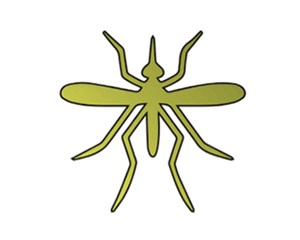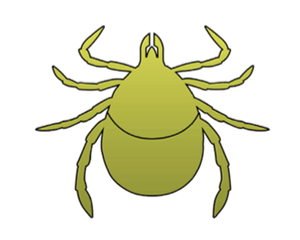Midges
All about the Midge
Everything you ever wanted to know about midges (but were afraid to ask)

The Gaelic name for midge is
meanbh-chuileag
meaning ‘tiny’ or ‘pigmy fly’!
What is a midge?
Midges are tiny flying insects with a wingspan of only 2-3mm. There are over 35 different species of biting midge in Scotland, but it is Culicoides impunctatus, otherwise known as the Highland Midge that earns its place as Scotland’s most ferocious foe.
You’ll be an all-you-can-eat buffet for their miniature scissor-like jaws if you foolishly venture out in ‘midge weather’ without your insect repellent.
But fear not, the Scots are as inventive as they are hardy. After years of scientific research, Dr Alison Blackwell, one of the world’s leading midge experts has found the answer and put it in a bottle. Smidge is the UK’s No. 1 midge repellent. It also works on mosquitoes, so what you don’t use up the mountains you can throw in your suitcase. Smidge up and nothing need ruin your love of the great outdoors.
Find out how it works, and why it’s the number one midge repellent in the UK.
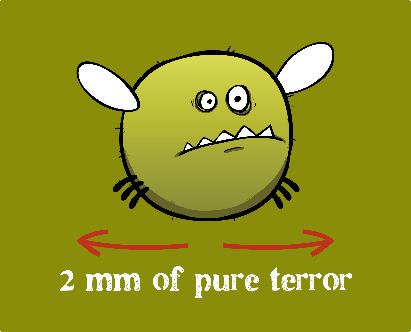
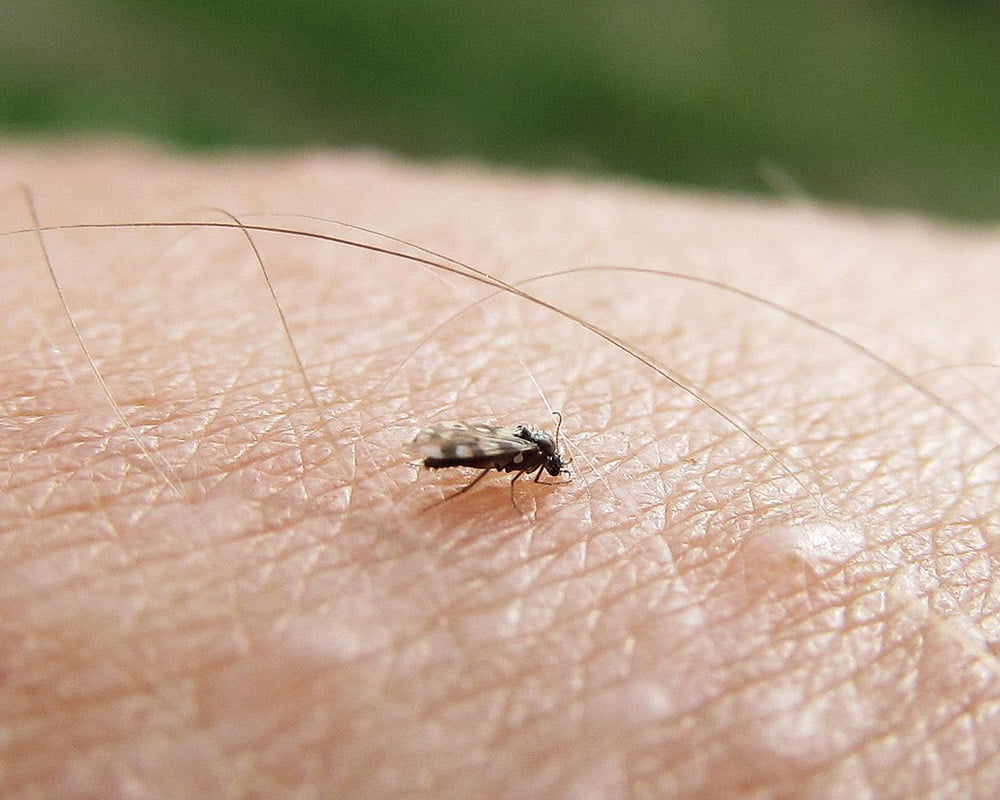
Why do midges bite?
It is only the female midge that bites. They emerge with enough fat reserves to mature their first batch of eggs, but need a blood meal to give subsequent batches enough nutrients to grow. Meanwhile, the boys suck on plant nectar and in this species are no trouble at all.
The Scottish midge lifecycle
These little bleeders are also little breeders.
Here’s how we end up with so many of them in such a short period of time.
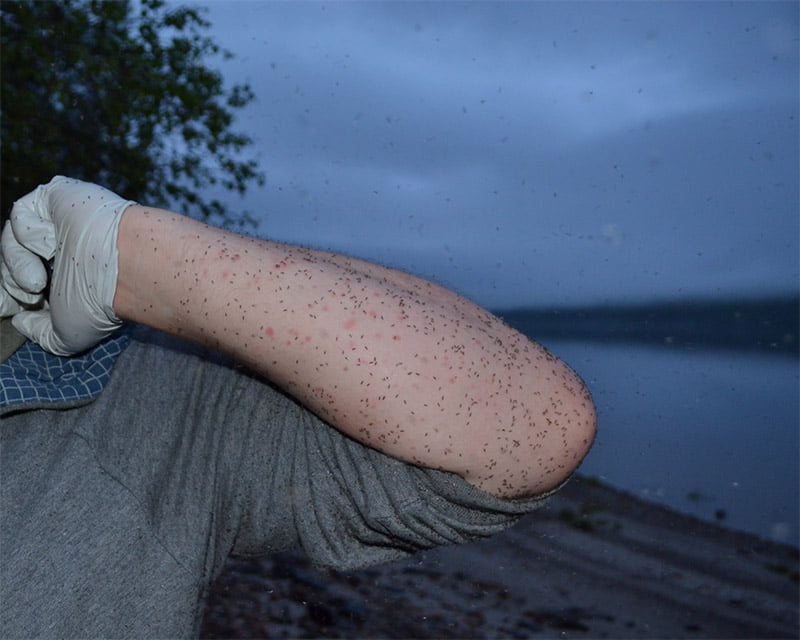
When do midges bite?
You’ll hear people in Scotland talking about ‘Midgey weather’. Midges thrive on still, humid conditions. They aren’t big fans of a breeze. With only 2mm of wing to flap they go nowhere fast when the wind speed is above 7mph.
Light intensity signals feeding time. The Highland Midge is most active in low-light conditions i.e dawn and dusk, or when cloud cover significantly reduces the intensity of the sunlight. Whatever the weather, take your Smidge and midges won’t cloud your day. If you’re planning a trip, why not take a look at the Midge Forecast?
How does the weather affect midges in Scotland?
Weather midges LOVE
A warm, damp spring
This kind of Spring weather will see midge numbers rocket.
Still, humid conditions
Dawn, dusk and cloud cover
When sun’s irradiance (or penetration through cloud) reduces to below 260 W/m2 the midges come out to play. When it drops below 130 W/m2 it’s all-you-can-eat buffet time.
A warm, wet Summer/Early Autumn
Often we see a 3rd generation.
A harsh winter has little or no effect
They are well protected below the soil’s surface.

Weather midges HATE
A cold, dry spring
It delays the arrival of the first generation.
Wind
Midges have tiny wings and can’t fly in wind over 7mph.
Sunny days
Sunlight suppresses midge activity.
Dry, hot June/early July
Reduces the survival of the second generation.
Where do midges go in winter?
Eggs from second-generation adults usually mature to final stage larvae, then take cover a few centimetres below the soil surface for winter. During that time it’s thought they migrate up and down through the soil over a daily cycle and have a quiet munch on decaying organic matter to keep them going.
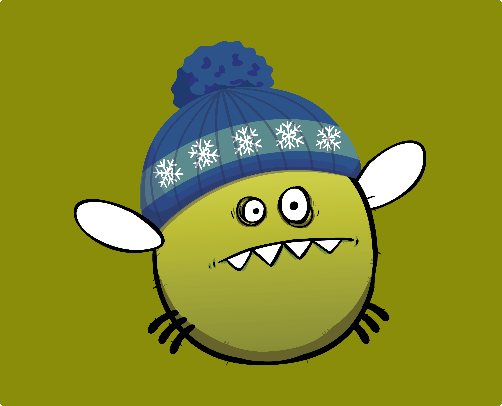

Is a midge bite sore?
Midges tend to feed for about 3-4 minutes and you’re unlikely to feel a thing. Until afterwards.
If you are bitten, the best thing to relieve midge bites is anti-histamine cream. If you can bear it, try not to scratch.
What are midges attracted to?
The reason it’s so hard to hide from midges is that it’s our breath that first attracts them. Fortunately, Smidge works by messing with their CO2 receptors making it harder for them to sense that you’re there. Here’s our guide to how midges search for dinner.
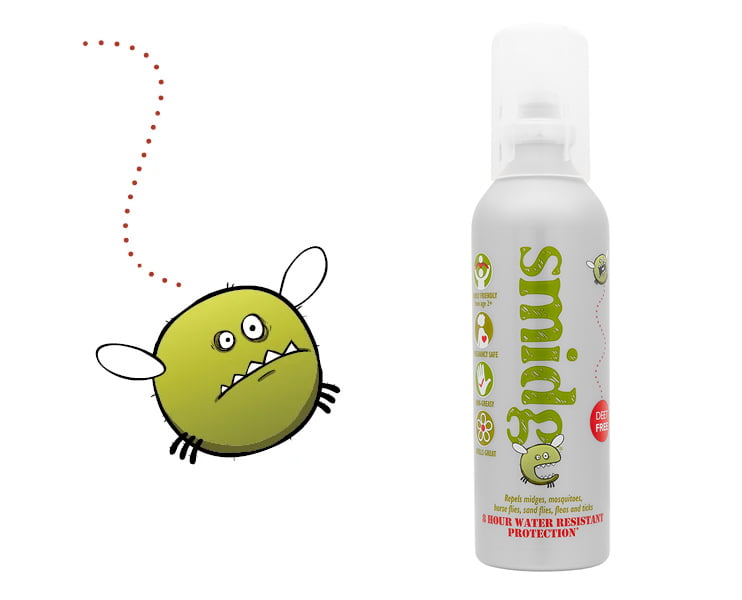
Step by step midge guide to biting humans
1. Activation


Nice breath!
The CO2 you breathe out signals to a midge there is dinner nearby.
2. Host Location


I can see you!
Midges start looking for other clues, body odour, heat, humidity, colour and movement. Once a nice fleshy part is secured….
3. Feeding Selection


You’re tasty!
…mediated by taste receptors on the mouthparts, midges will get busy with their scissor jaws if you taste delicious.
4. Feeding Frenzy

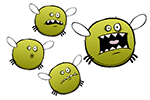
Girls over here!
Midges are also great believers in the sisterhood, if a pregnant female finds you; she lets off a pheromone invitation to her friends to join her (hence the sudden cloud).
Are some people more susceptible?
Yes. Some people are more attractive to midges (combination of body odour, temperature etc.) and some people react badly to bites.
Midges pump an anti-coagulant into the wound they create to feed from, our immune systems respond to this anticoagulant creating the itching and swelling. Our immune responses are different, which accounts for the variance seen throughout the population.
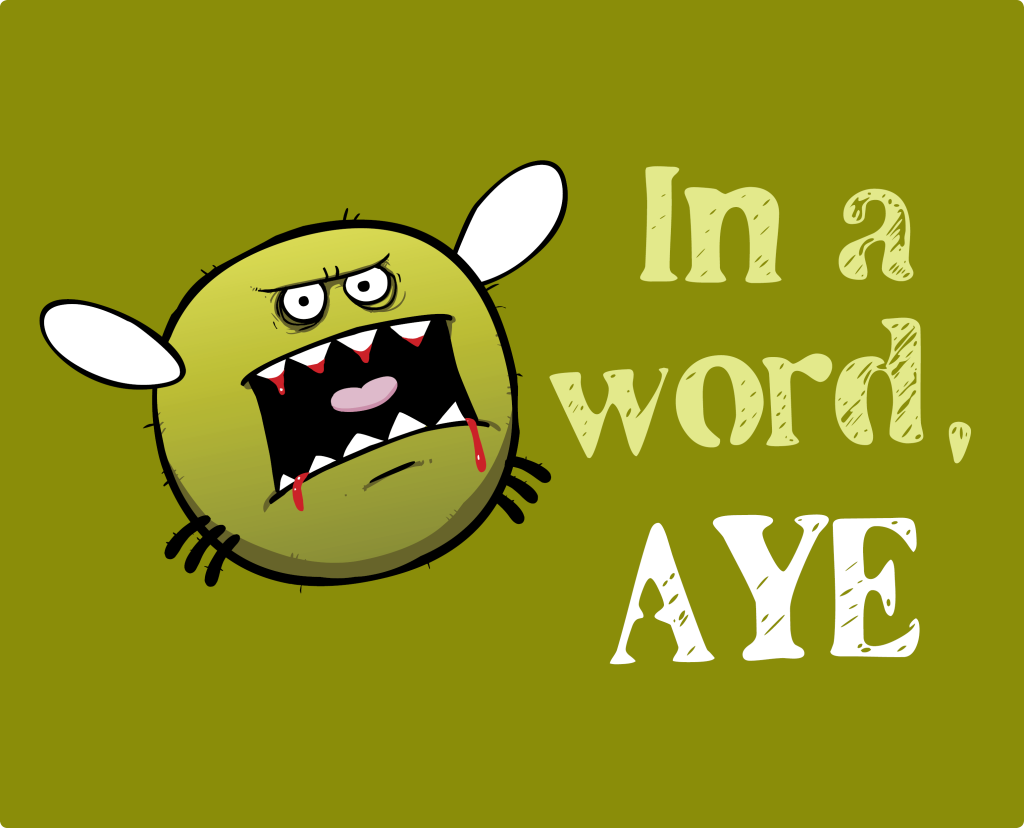
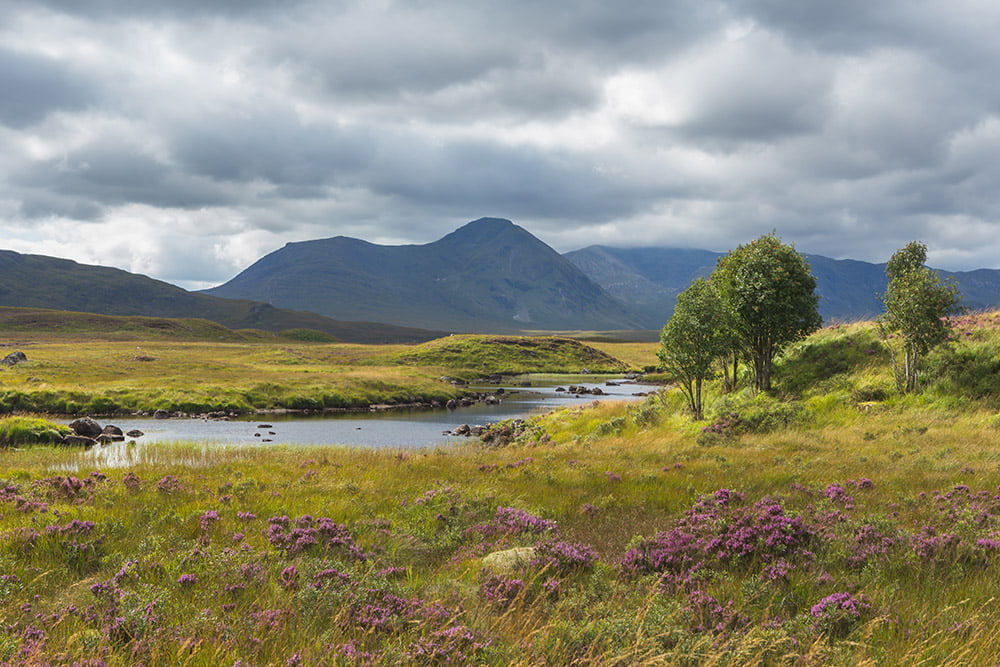
Where do midges live?
The Highland Midge prefers to lay its eggs in slightly acidic habitats, typically peaty soils containing favourite plants like rushes. When they’re not biting they like to hide in long bracken, or amongst moss on tree bark. This type of habitat dominates western areas of Scotland.
Other species e.g. Culicoides obsoletus are dung breeders and are associated with farms; this is the main species of concern to farmers as they are potential vectors of important livestock diseases were they to get into the UK, such as bluetongue virus. There is no risk to humans of this or any other midge-transmitted virus. For us they can simply cause an annoying bite.
How do you get rid of midges?
Midges are an important part of the environment; larval midges munch away at decaying plant matter in the soil and adult midges are important in the diet of many species of birds and bats. We wouldn’t want to get rid of midges, even if we could. However, you can make yourself harder to find; see how Smidge works.
However, if you’re planning an event and want to reduce midge numbers or keep them away from certain areas, see midge management for how we can help.

Midge Management
If you own a property, business or run an event that is being adversely affected by midge activity, our midge management service can help. Whilst midges cannot be eliminated entirely without having substantial, adverse effects on the environment, a degree of management can make them less of a nuisance.
The team will work with you to conduct a survey of your area and recommend the best midge-reduction approach. If you’d like to know more, please contact Dr Alison Blackwell on 01382 561 696 or ablackwell@apsbiocontrol.com.
Preventative measures
- Habitat management
- Midge traps to reduce the breeding population
Protective measures
- Barrier systems to prevent midges entering key areas


